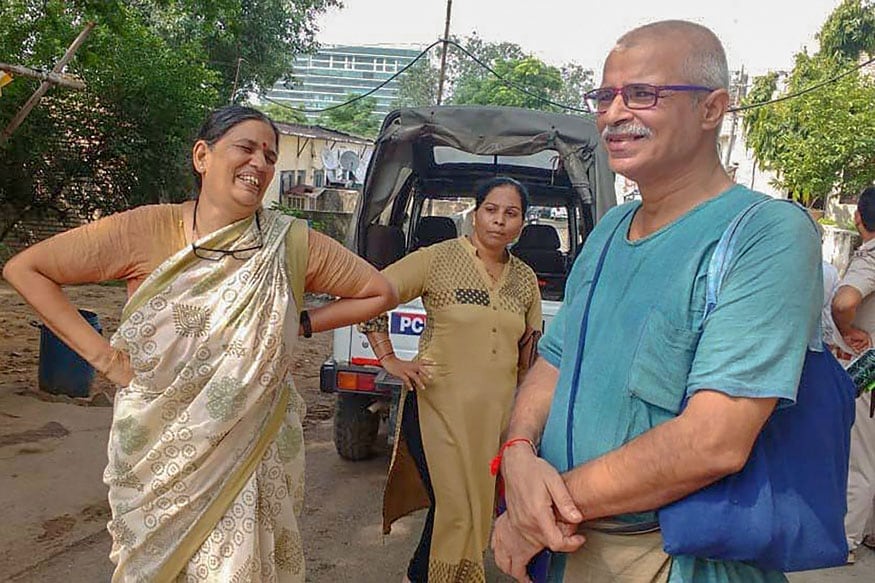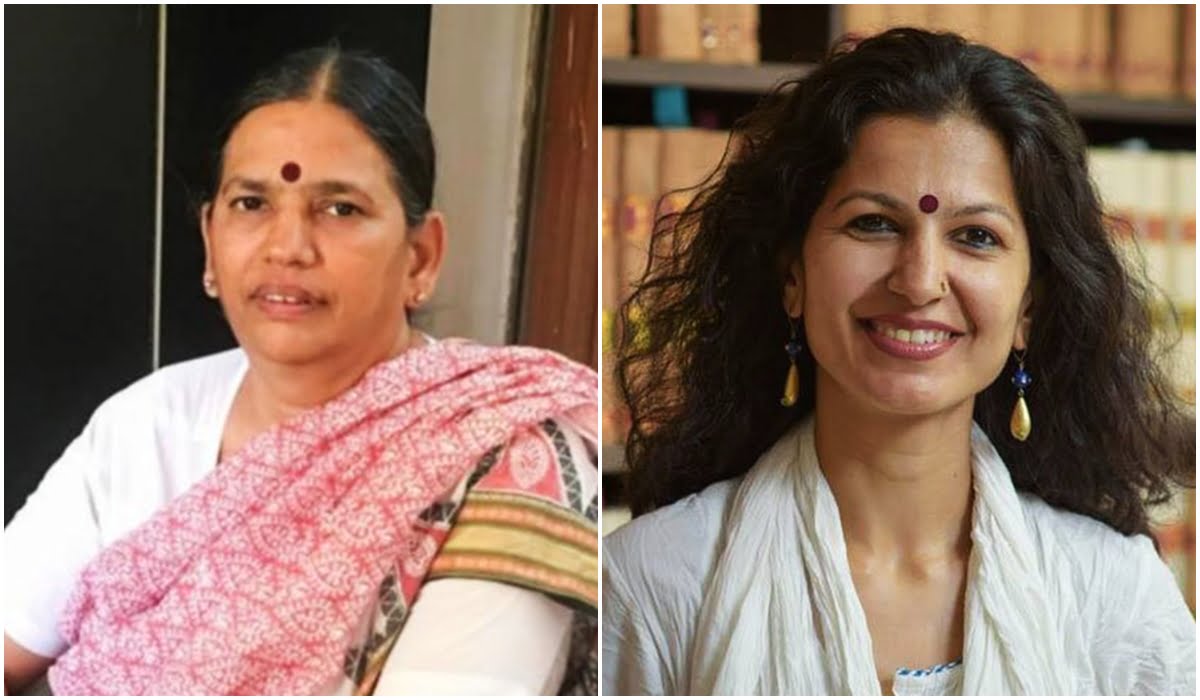Posted by Anwesha Banerjee
As the world witnesses agitation from various minority communities, using existing formal legal processes to bolster their movements has been a major challenge. As a concept, movement lawyering is akin to the tool of public or social interest litigation in India. It envisions a close and harmonious relationship between the legal and activist circles who bring their individual expertise to fulfill a common objective – justice. India has been witness to the works of several noteworthy lawyers but some of their practice is an embodiment of movement lawyering. Sudha Bharadwaj, Surendra Gadling, Jayna Kothari among others, have proved that continuous effort put in by pressure groups at a local level when channelised in a controlled and efficient manner can build a huge potential change in the social set-up.
Despite the fact that most of these protests for women’s rights, queer community rights, or religious minority rights, are against existing state structures and some, even directed at the judiciary, using beneficial legal provisions such as Articles 32 and 226 as in the case of India, to approach courts and securing favourable orders can be an added impetus to the success of the movement. Various bodies such as NGOs, social activists and private advocacy organisations have used these legal mechanisms strategically to use formal legal pathways as a field where the voices and concerns of the marginalised communities can be put forth. This has paved the way for more lawyers to recognise the strength that including key community leaders and activists can add to a cause. Movement lawyering recognises the need for a strong and unequivocal collaboration between the legal fraternity and community leaders to imagine creative solutions to the problems at hand while simultaneously holding space for members of the community who may often get invisibilised in courtroom dialogue.
Also read: The Law’s Differential Treatment Of Men And Women’s Voluntary Intoxication
Movement lawyering recognises the need for a strong and unequivocal collaboration between the legal fraternity and community leaders to imagine creative solutions to the problems at hand while simultaneously holding space for members of the community who may often get invisibilised in courtroom dialogue.
What Is Movement Lawyering?
By focusing on the leadership of those directly impacted, movement lawyering promotes the process of inviting the client (the communities) to share their narratives effectively, without seeking to distort them. It is a client-centred model – a blend of legal stakeholders in a system along with social activists who understand the community. Movement lawyering is a means to present important public concerns to the court while centering these conversations around those very communities.

Over the years, the legal set up has changed to a large extent. Instead of usurping the concerns of the community and becoming a leader of the movement, the people’s lawyer, through movement lawyering, seeks to collaborate with key stakeholders in the movement and turns to the court to amplify voices of the communities. Their role transforms into one where they put forth persuasive narratives and become a liaison between the community and the legal system. There have been several instances in the past where the people’s movement through movement lawyering against injustice has led to landmark decisions shaping the way for a progressive, more inclusive nation. An exemplary of movement lawyering is how the works of civil rights activist and lawyer Sudha Bharadwaj around strengthening the voices of the adivasis and workers of Chhattisgarh have been monumental in not only shaping the movement but also in representing them before some key decision holders in the Indian bureaucracy such as the police and courts. This has increasingly led to communities coming to the frontlines alongside lawyers for a conscious, collective and organised attempt to bring large-scale change. Another example of such phenomenal work has been brought about by senior lawyer Jayna Kothari who has been working closely with trans activists and trangender rights groups.
An exemplary of movement lawyering is how the works of civil rights activist and lawyer Sudha Bharadwaj around strengthening the voices of the adivasis and workers of Chhattisgarh have been monumental in not only shaping the movement but also in representing them before some key decision holders in the Indian bureaucracy such as the police and courts.
Internationally, another recent example of effective usage of movement lawyering as a tool to further rights of a larger community is the legal battle against Oracle Corp. for gender disparity on the issue of pay and unequal wages for the same work. The Californian court held the database giant liable for discriminatory behaviour and made way for women to receive equal pay at the company. This has the potential to further act as a precedent for equal pay throughout the tech industry.
Owing to their knowledge of court procedure and decorum, it is but natural for lawyers to have the upper-hand while arguing in court. While this is necessarily a result of their skill and expertise, movement lawyering envisions a collaboration between the legal fraternity and community activists who may not be as well-versed with the law. Where the communities’ opinions and needs are systematically devalued, it is essential to bring their experience and disputes to light through the tool of movement lawyering. The idea is that the communities continue to hold their power and voice even while being represented in courtrooms in order to ensure that their concerns are given due weightage. Movement lawyering therefore, seeks to use formal legal processes in a way which continues to recognise the power of the community and not minimise their agency.
Also read: No Indian Judges, Marriage Is Not The Remedy To Sexual Abuse
Movement Lawyering And Gender Justice In India
In India, the concept of movement lawyering has gained prominence in the form of Public Interest Litigations (PIL). Over the years, the tool of PILs have been used strategically by lawyers to advocate the cause of gender justice in India. The courts have used the law as a tool to both strike down oppressive laws as well as make way for guidelines where there were none. Some landmark examples of this include the judgment of the court in Vishaka v. State of Rajasthan which paved the way for the Sexual Harassment of Women At Workplace (Prevention, Prohibition and Redressal) Act, 2013. A few other examples of the law being a propeller to the gender justice movement in India include the judgment in favour of acid attack survivors, the Maharashtra bar dancers’ right to work, the NALSA judgment as well as the Section 377 judgment. The use of movement lawyering in the recent past can also be seen through the petitions filed before the Supreme Court against the oppressive Transgender Persons Act, 2019 and the exclusionary Citizenship Amendment Act which highlight how the law can be used strategically to address concerns of the larger public. Recent strides made by the transgender community in courts have been buttressed by to the work of senior advocate Jayna Kothari who believes in consulting with the community and acting as their representative in courts. She has not only made key arguments in the recent judgment on Section 377 but has also, amongst other things, made some integral submissions before the High Court of Karnataka ensuring socio-economic security to the transgender community during the pandemic.
The use of movement lawyering in the recent past can also be seen through the petitions filed before the Supreme Court against the oppressive Transgender Persons Act, 2019 and the exclusionary Citizenship Amendment Act which highlight how the law can be used strategically to address concerns of the larger public.
There is however a downside to movement lawyering when it is not carried out in collaboration with the grass-root community leaders and activists. There have been instances where lawyers, under the garb of representing the community, have wrongly imprinted their personal goals onto the community. This is most clearly evidenced by what is currently happening with the LGBTQ+ community in India. The lawyers representing the community in the landmark Section 377 verdict have not only been hailed as leaders of the movement in the country but have also often been responsible for focusing on legal battles which the community does not identify with. Their narrative now pushes for a socially inclusive marriage institution for the community. Such a move is largely being criticised because this is not what the queer community aims to achieve. There are other larger issues that require urgent attention before the legalisation of same-sex marriage happens.
Movement lawyering has three main pillars which make it a tool “for the people and its communities”. First, to be grounded in a place of modesty and utilise lawyering as one of the important strategies crucial to advance a social movement; to act in a manner that acknowledges the intersectionality of communities they seek to represent to build movements together, and lastly to observe the strength and be willing to let go of personal privileges in order to act in the interests of and stand up for justice.
Although the existing barriers to justice have become more pronounced given the growing concerns over the independence of the judiciary in India, utilising movement lawyering as a tool can be highly beneficial to nurturing marginalised voices. It seeks to bring lawyers and social activists together, encouraging them to use their strengths, skills and expertise not to exclude but complement each other in the fight to preserve constitutional values.
Ideas around movement lawyering are currently developing significantly and this article represents a specific analysis of social justice lawyers in India and some of the steps that they are taking towards larger movement lawyering, one of the first steps of which is centering communities.
Anwesha Banerjee is a volunteer at One Future Collective’s FemJustice Center.
About the author(s)
One Future Collective is a feminist youth led not for profit based in India. Our mission is to nurture radical kindness in people, communities and organisations through the work we do on gender justice, feminist leadership and mental health, to enable a world built on social justice led by communities of care.




